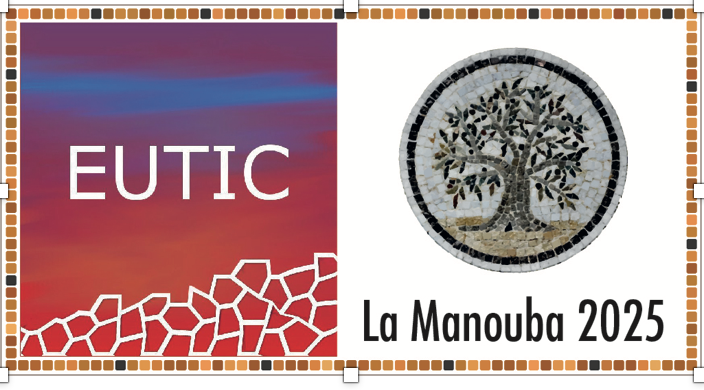EUTIC 2025 aligns policy with tradable services
Tunisia’s EUTIC 2025 tests if ICT exports can top a USD0.70bn run-rate and FDI averages USD100m/quarter as policy holds 7.50%, the dinar steadies near 2.93 per USD (TND=X), and global conditions stay benign with oil range-bound (CL=F).

Tunisia’s EUTIC 2025 forum in Tunis is a policy signal that the government aims to convert digital-economy initiatives into macro traction under constrained finances. The near-term backdrop has stabilized but remains tight: real GDP growth is projected at 2.5% in 2025 (calendar year), up from an estimated 2.3% in 2024, while headline inflation slowed to 5.0% year-on-year in September 2025.
The central bank has kept the policy rate at 7.50% since a March 2025 cut, prioritising disinflation and currency stability. Public debt stood at 81.2% of GDP in 2024, and the 2025 financing mix leans heavily on domestic borrowing amid thin external access. Net foreign-currency assets were TND 24.6bn as of 10–15 October 2025, equal to roughly 105 days of imports, and the dinar traded in a narrow corridor near USD/TND 2.92–2.94 in mid-October (TND=X). Within this macro frame, a credible digital push must lift productivity and exports without widening fiscal risks.
The transmission mechanism runs through tradable services, capital formation, and balance-of-payments stabilisation. On services, ICT service exports reached about USD 517m in 2024 on a balance-of-payments basis, building a non-tourism earner less sensitive to weather and seasonal shocks. With the current account deficit recorded at roughly 2.7% of GDP in 2024, incremental ICT receipts have an outsized effect on external funding needs, particularly as the merchandise trade deficit widened in the first three quarters of 2025.
On investment, sovereign space is narrow, so project delivery depends on private balance sheets and concessional co-financing rather than budget subsidies. This puts weight on low-cost regulatory levers—data-protection clarity, cross-border connectivity standards, streamlined permits for data centres—that compress execution risk premia and reduce the required return on equity for greenfield builds. On stabilisation, a steady exchange rate suppresses pass-through and helps firms price imported hardware and cloud services with less buffer, anchoring the capex pipeline.
Monetary and fiscal settings shape the hurdle rate. With policy at 7.50% and long tenors historically priced in the high-single digits—Tunisia’s weighted 10-year Treasury rate was about 8.6% in September 2024—project viability turns on blended finance. Public–private partnerships and multilateral guarantees can lower weighted average cost of capital by 150–250 basis points relative to all-domestic funding structures. That spread compression is material for data-centre civils, backbone networks, and cybersecurity platforms whose cashflows back-end load over five to seven years. In equity markets, local liquidity is thin, but infrastructure-adjacent and telecom engineering names provide directional read-through on orderbooks; the investment case remains execution-led rather than beta-led.
Regional context frames the opportunity. North Africa’s growth mix is bifurcated between hydrocarbon-exposed and services-diversified models; Tunisia sits in the latter and can leverage EU proximity on data governance and AI accountability to attract near-shoring mandates. Convergence with European privacy and cybersecurity frameworks lowers legal frictions for cross-border service contracts, widening the funnel for enterprise IT, business-process services, and fintech integration. Global conditions are supportive at the margin: a softer global inflation pulse, range-bound U.S. yields, and broadly stable oil prices (CL=F) reduce external volatility, while services trade growth outpaces goods in several peers. The constraint is domestic: heavy Treasury issuance to local banks risks crowding-out and keeps term premia elevated, so non-sovereign risk-sharing remains critical.
The market-relevant test is whether EUTIC’s pipeline converts to measurable flows within six quarters. Three indicators define success. First, quarterly ICT FDI receipts should average USD 90–100m over 2026H1–2026H2 versus a low base today; anything below USD 60m per quarter implies insufficient scale. Second, ICT service exports need to rise above a USD 0.70bn annualized run-rate by end-2026, a level consistent with a 25–30% uplift from 2024 and enough to narrow the current account by 0.3–0.4 percentage points of GDP at unchanged imports.
Third, funding conditions must ease without un-anchoring prices: a 100–150bp decline in 10-year local yields from the high-single-digit baseline alongside CPI sustained near 4.5–5.0% would lower WACC and unlock delayed capex. If these thresholds are met while the dinar remains orderly around USD/TND 2.9–3.1 (TND=X) and reserves stay near 90–105 days of imports, the digital economy will move from narrative to buffer—raising potential growth toward 2.7–3.0% by 2027 and modestly compressing sovereign rollover risk.





